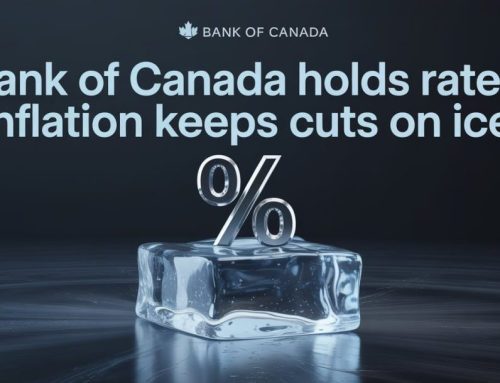Since the beginning of year, almost every piece of mortgage related news has been about increasing rates. As fixed mortgage rates have increased by roughly 3.00% since the fall, it’s understandable that they are getting their share of the headlines.
But has the fixed mortgage rate increasing madness finally come to an end?
For the first time this year, there is now downward pressure on fixed mortgage rates. But will they actually drop?
How Fixed Mortgage Rates Are Determined
Mortgage rates are heavily influenced by bond yields. When the yields rise, upward pressure is placed on fixed rates. When the yields drop, it’s the opposite.
This doesn’t mean that fixed mortgage rates will always move perfectly in line with the yields, but a lenders profit is closely tied to the spread between the yield and the mortgage rate you are quoted. When the yields rise and rates remain the same, the lender’s profit margin shrinks. When yields drop, their margin increases. Eventually, they will move their rates accordingly.
The bond yields reached a peak of 3.489% on June 13th, which is the highest they have been since January 2008. Mortgage lenders will generally add 1.25% to 1.50% to the bond yield which then gives you the rates you are quoted.
This doesn’t mean that mortgage rates will always fall within this spread, and can be higher or lower depending on market volatility, sentiment, market conditions, etc.
The 1.25% to 1.50% is a lenders comfort zone and they will typically aim to keep rates within this range. Using this formula, 5 year fixed mortgage rates would be within the range of 4.84% to 5.09% based on the June 13th peak.
However, the current market rates are higher, varying from 5.04% to 5.39%. We’ll of course ensure that you’re always paying the lowest discounted rates available, which are currently in the range of 4.69% to 5.09% depending on your situation.
But the current mortgage rates should be lower than this.
Downward Pressure On Fixed Mortgage Rates
Bond yields have been trending downward since mid-June and have dropped about 12%. This is the largest drop we have seen so far this year and is the reason why there is now downward pressure on fixed mortgage rates.
Despite the decrease in yields, fixed mortgage rates have not started to drop. At least not yet.
Why Fixed Mortgage Rates Should Be Lower
As of today, the bond yield is at 3.08% at the time of this writing. This means that 5 year fixed rates should be in the range of 4.33% to 4.58%. Quite a bit lower than today’s rates.
Mortgage lenders should be able to come down to within this range, however it seems as though they are holding onto higher profits due to market volatility. This can create fear among lenders, which can result in them holding onto higher profit margins.
Bank of Canada Rate Increases Still Expected
Many tend to believe that when the BOC increases their rate, then fixed rates will go up by the same margin. However, this is not the case.
The Bank of Canada key policy (overnight) rate is what mortgage lenders use to set their prime rates. This affects those with variable rate mortgages, as well as Home Equity Lines of Credit (HELOC). It does not have a direct influence on fixed mortgage rates. In fact, fixed rates can move in the opposite direction.
How Much Will The Bank of Canada Increase Next Week?
The Bank of Canada has increased their rate by 1.25% since March. They are expected to increase by as much as 0.75% with their next scheduled announcement on July 13th, however, it’s still possible that they could only increase by 0.50%. We’ll have to wait until next week to find out.
This doesn’t mean that we won’t see cuts to fixed rates. If the bond yields remain at their current level or continue to trend downward, then we’ll almost certainly see some cuts to fixed, regardless of the upward movement from the Bank of Canada.
Given that the Bank of Canada has been so aggressive, talks of a recession to follow are starting to increase, which is likely reason for the downward trend in bond yields.
Conclusion
While there is downward pressure on fixed mortgage rates, it doesn’t guarantee they will drop. They would have to either remain at current levels, or continue to trend downward before we see any movement. If the trend were to reverse, which is always possible, then that would put an end to any downward pressure. At least for now.








Leave A Comment